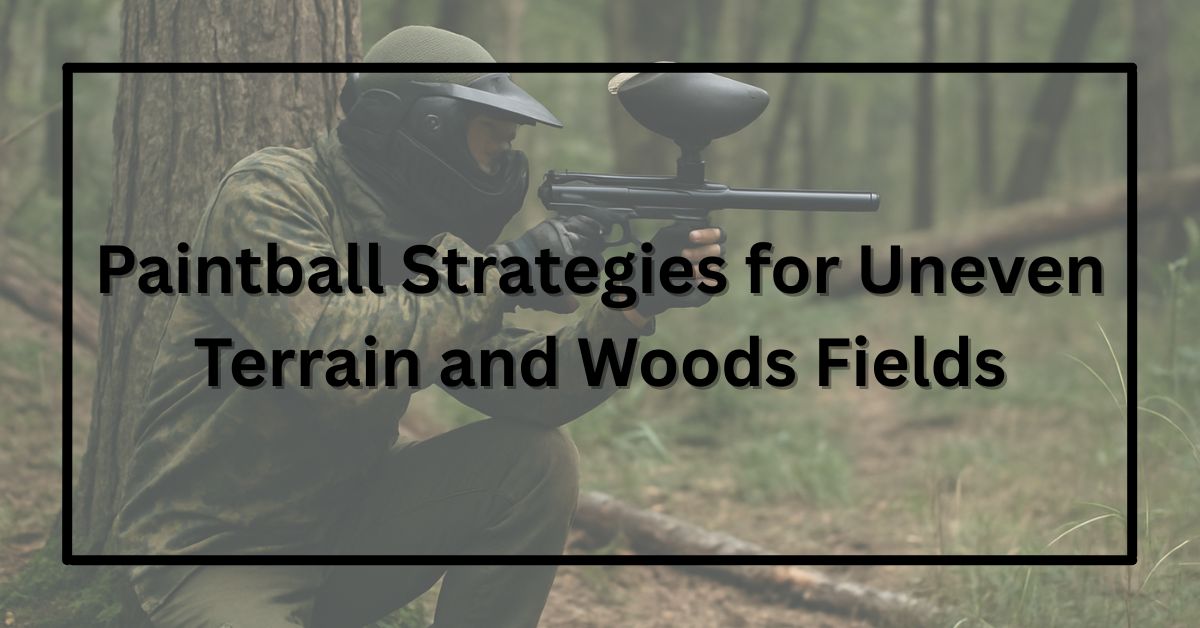Woodsball and uneven terrain paintball fields are completely different from flat, open speedball arenas. Trees, hills, and unpredictable ground make every match a test of strategy and awareness. To win, players must think beyond simple shooting skills; they must use the environment to their advantage.
In this guide, we’ll explore proven paintball strategies for uneven terrain and woods fields that will help you stay hidden, move smarter, and outthink your opponents in natural settings.
Understand the Field Layout
Before the first shot is fired, walk the field if you’re allowed. Take a few minutes to identify trails, high ground, and dense cover.
Knowing where the open areas, slopes, and choke points are helps you plan routes and anticipate enemy positions. Pay attention to how elevation changes affect your visibility; uphill shots can be harder to land, while downhill areas may limit your field of view.
A quick mental map of the terrain can give you a major advantage once the game starts.
Use the Terrain to Your Advantage
The landscape itself is your best ally in woodsball.
- Hills and slopes: Use them to stay hidden while approaching opponents or to gain elevation for better visibility.
- Trees and rocks: These make excellent natural bunkers when you need quick cover.
- Logs and brush: Perfect for ambushes—crouch low, stay quiet, and wait for the right moment.
Always remember that uneven terrain rewards players who can adapt and move fluidly through it.
Master Stealth and Movement
In wooded paintball fields, sound is your biggest giveaway. Move slowly, step on solid ground instead of leaves or twigs, and crouch when approaching open areas.
Use hand signals or whispers to communicate with teammates. If you need to move quickly, time it with gunfire or noise to mask your movement.
Stealth isn’t about moving slowly; it’s about moving strategically and unpredictably.
Establish Strong Communication
Communication is key when teammates are spread across hills and trees. Before the game, assign roles like scout, sniper, or support. Use short, clear callouts or hand gestures to coordinate movement.
When the terrain splits your team, stay adaptable; reposition or regroup based on what you hear, not just what you see. A silent, well-coordinated team will always outperform one that’s noisy and scattered.
Control the High Ground
In any outdoor battle, high ground equals dominance. From an elevated position, you get better visibility, easier target tracking, and improved shooting range.
But remember, the high ground also exposes you if you’re not careful. Use trees, brush, or rocks for cover, and never silhouette yourself against the sky. Move positions often to avoid becoming predictable.
Blend with the Environment
Camouflage is your invisible armor. Match your clothing to the color and density of the field, for example, darker greens and browns work best for dense forests, while lighter shades suit dry or sparse woods.
Avoid shiny lenses, metallic gear, or brightly colored markers. Break up your outline using branches, mud, or natural shadows to make yourself harder to spot.
Adapt Your Shooting and Positioning
Uneven ground affects how you aim and fire. Shooting uphill requires a slightly higher aim, while downhill shots may need compensation for angle and gravity.
Keep your feet stable—crouch with knees bent to maintain balance. Use nearby terrain features to support your elbows for steadier shots. Remember, accuracy often beats rate of fire in woodsball.
Coordinate Ambushes and Flanking Maneuvers
Woodsball fields are perfect for surprise attacks. Set ambushes near trails or choke points where opponents naturally pass.
Flanking from higher or concealed routes lets you catch opponents off guard. Communicate quietly with teammates before executing—timing and silence are what make ambushes successful.
Stay Aware of Natural Hazards
Uneven terrain isn’t just a tactical challenge—it’s a safety concern. Watch out for tree roots, loose rocks, and slippery mud.
Keep your marker’s barrel clean from dirt and leaves, and avoid diving into unknown ground. Always prioritize safety over aggressive plays—one bad fall can end your game early.
Conclusion:
Mastering paintball on uneven terrain and wooded fields takes more than fast shooting. It’s about awareness, movement, and teamwork. By understanding the terrain, staying stealthy, and using natural cover wisely, you can outsmart opponents who rely purely on speed.
So next time you hit a woodsball field, don’t fight the terrain—use it. The forest can be your best teammate if you know how to play with it.

